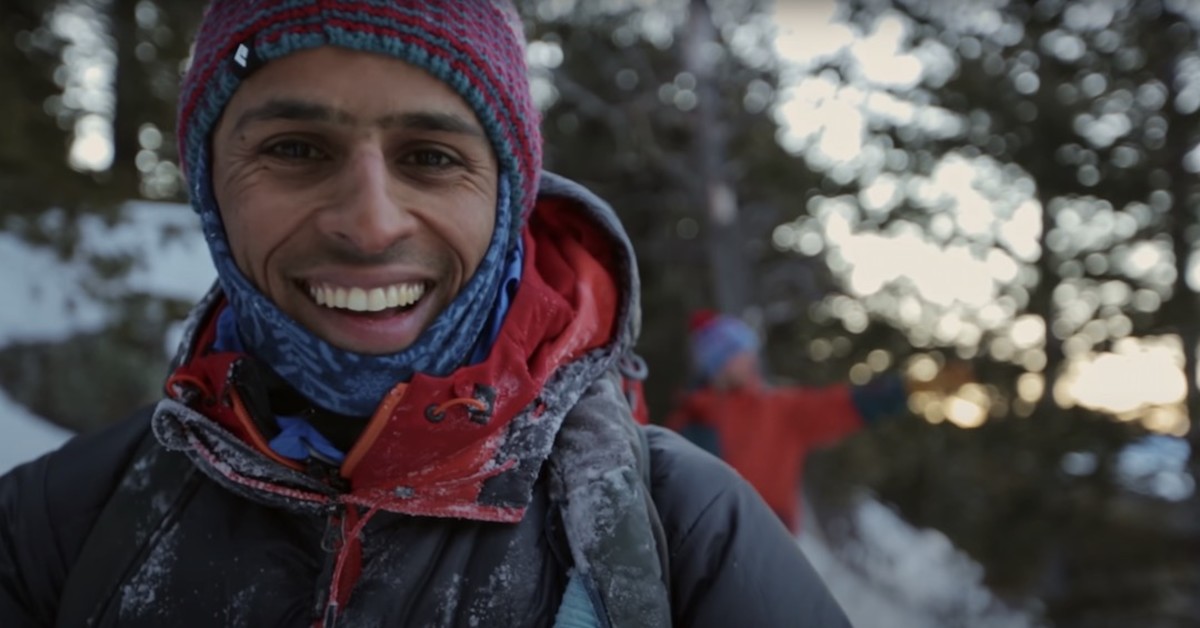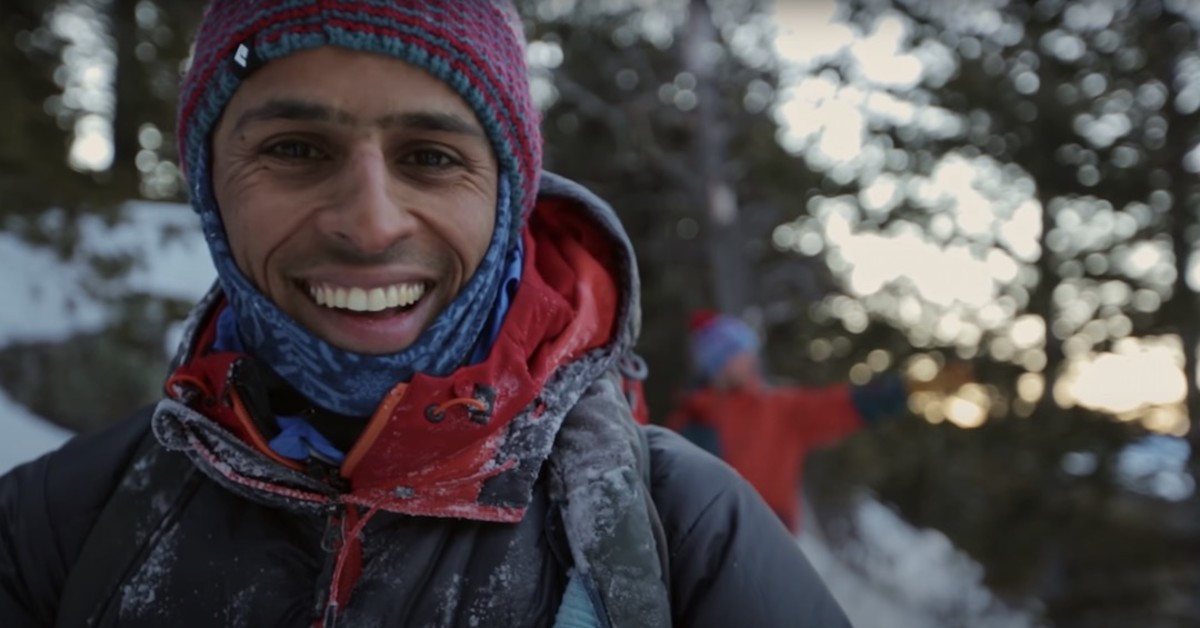
The mountains are a big place. A massive arena for us to explore. But what we can miss is that the mountains are a game of inches,” says Zahan Billimoria, professional guide, father, and founder of Samsara Experience, a training program designed for mountain adventures.
Unlikely the majority of backcountry guides, Z, as he’s known to most, prefers to talk about his mistakes rather than his major accomplishments. And he admits that he’s had a lot of close calls. Through them he’s learned that literal inches are what separates the right and wrong side of the line—and survival itself. “That’s hard to remember in a big arena. All the micro-decisions matter.”
Billimoria’s relationship with risk was captured in a film from Patagonia called Solving for Z, A Calculus of Risk. What’s unique about the film is how candid he is about the miscalculations he’s made.
Admitting Mistakes Is The Start
The act of admitting mistakes isn’t an empty gesture for Billimoria. He believes that sharing mistakes is a step toward knowing we are all bound to make them; we can’t be perfect in the mountains. “We need to start by looking at ourselves,” he says. “Just like larger issues in the world right now, a lot of this problem is driven by men and a male way of thinking. Reflection, humility and consensus building are characteristics that many of us have to work to develop. These traits seem to come easier to the women I have traveled with.”
Males believe that they can systematize, organize, and understand the mountains. “But that’s bullshit,” says Billimoria. “We’ll never be able to do that. The mountains will always be an enigma. They’ll always be a mystery. And that’s exactly why we’re drawn to them.”
Ceding the notion of control over environment (especially in a modern world that ever provides more information and data on it), can yield serious benefits: “Now I see how a little more self-doubt can help foster the kind of humility that I think is needed to survive the long game.”

Understanding Athlete Intelligence
Billimoria certainly understands how fortunate his is to have survived a dangerous career as a backcountry guide. Reassessing how precious time is, he puts into family, trying to reshape the culture of skiing, still guiding a bit, but also with a renewed curiosity about the human body, movement, and athleticism. That research has been a passion since breaking his back in 2003, resulting in an extended recovery. Two years later, he became a dad, expanding interest “in the elasticity of the body and how fast we can adapt to new environments.”
Forced to stop climbing during that recovery, Billimoria spent the better part of a decade studying the art of endurance, winning marathon-distance trail races, qualifying for the 2008 U.S. Ski Mountaineering team and competing in the World Championships of Ski Mountaineering. Eventually he returned to a focus on strength training to improve his climbing. With that combined knowledge he started Samsara, training athletes one-on-one. More recently he realized the third dimension, highlighted by the gap between maximum strength and the ability to climb at the highest level. He calls this athlete intelligence.
This is where the physical gets heady too. The common ground is that everything is tied together in complex, three dimensional movements, and the focus is on the connective tissue that is fascia. “Muscles are singular units and one part of the puzzle,” he says. “Fascia is a body-wide organ. It’s an integrator of the various systems that are responsible for complex movement. The reason elite athletes move the way they do, is because they have harnessed the power of their fascia system,” says Billimoria.
“Very few mammals on the planet have the lower leg architecture that enables us to have such good rebound. What the science is revealing is that rebound is not so much a muscle function, but rather a fascia and tendon function. If we enhance the fascia matrix we gain more forward propulsion without a metabolic cost. Understanding this better is the next chapter of human athletic performance.”
To do that athletes need to train in a way that reflects our body’s bias for integrated movement patterns, and to emphasize the elastic rebound of our fascia. Samsara is launching its first publicly available program this month to help share what they have learned in this research.
While most age-old techniques of training emphasize muscles, this always comes at a cost. “A larger muscle requires more energy to operate, just like a Lamborghini needs more fuel to go fast. I’m interested in integration instead of segmentation of these different components,” says Billimoria. “Our interest in training is a fascia-driven perspective, creating more powerful, agile, and integrated athletes capable of taking on the greatest athletic challenges in the mountains.”
Celebrating Risk Lures Us In
As a culture, we tend to celebrate risk, and then celebrate that we are better than it, that we have it figured out. This can lure us into thinking that if we are engaged enough, we can outplay it. But what we are seeing is that more education doesn’t always correlate with safer outcomes. “If we were able to control the risk completely, it would destroy the experience of being in the mountains,” says Billimoria. Instead, he encourages the outdoor community to respect the mountains and forget the illusion of control. “I’m learning to admit that I have been lucky. Yes, I’m a dedicated student of the mountain environment, I hope to always be, but that hasn’t guaranteed my safety; good luck has played a role, too. I made a ton of mistakes and many of my friends who were just as smart are not here anymore. I was just lucky.”
Billimoria believes change is afoot. COVID is reshuffling the entire world and that’s made a huge impact on the backcountry, too. Trailheads are more busy than ever, often with new users groups, including more women and people of color. “There’s a new audience in the mountains and our first reaction is for us to teach them everything we know and certainly there is much to share, but we don’t own this space, and we don’t have it figured out. I think we should be listening to what some of these new voices have to say, they are the players of the future.”
This influx of other cultures might be the ticket to better understanding our mindset in high-risk environments. “We need more discussion and less assertiveness and unwarranted confidence,” he says. “Less control and more focus on finding ways to move through the mountains safely. Having more women and people of color will drive new conversations, which hopefully leads to change.”
If we’re not proud of our current culture, we need to open the conversation and integrate new perspectives, says Billimoria. “I was recently working with a group of women, and many of the traits that I try to practice and teach, came very naturally to them. Consensus building, collaboration, and listening over decisiveness. That’s a much better way to travel in the mountains and manage risk. Currently we’re built on this notion that if we just try hard enough we will dominate the mountains. That’s masculinity speaking. We think that if you learn everything and master the checklist you will be safe, but that can control the outcomes. That’s the thing with risk: The more you think you have it figured out, the more likely you are to get caught.”
So in short, be willing to live with uncertainty with our environment and with how the future in it will unfold. That’s why, after all, we’re seeking out wild, real, raw—and ultimately uncertain—places to begin with. “Uncertainty is inherent to risk,” Billimoria says, “the mountains make no promises, they will always be a risky place.”
For access to exclusive gear videos, celebrity interviews, and more, subscribe on YouTube!






